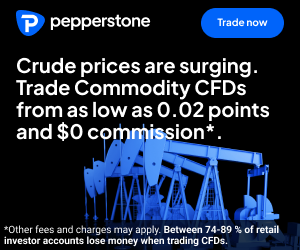BEST MT4 INDICATORS FOR FOREX SCALPING
MetaTrader 4 (MT4) remains the most popular platform for Forex scalpers, not just for its speed but also for its wide range of custom indicators. The right tools can make the difference between spotting a clean setup and missing it altogether. From moving averages to oscillators and volatility bands, MT4 offers a lightweight yet powerful toolkit that traders can tailor to their style. This article reviews the best MT4 indicators for scalping, explains the role each plays, and shows how to build a simple, effective stack without clutter.

MT4 Indicators
MetaTrader 4 (MT4) has earned its reputation as the workhorse of retail Forex trading, and nowhere is this more evident than in the scalping community. The platform’s enduring popularity comes not only from its intuitive interface and fast execution but also from its robust library of indicators. For scalpers, who operate in a world of seconds and micro-movements, having access to accurate and responsive indicators is critical. The challenge is not a lack of tools—MT4 offers thousands—but knowing which ones truly add value without overloading your charts.
Why Indicators Matter for Scalping
Scalping hinges on timing. You need to recognise when momentum is about to ignite, when a pullback is likely to reverse, or when a breakout is failing before others catch on. Indicators provide that extra layer of insight, translating raw price action into digestible signals. A moving average, for instance, smooths out the noise of rapid ticks, while oscillators like RSI or Stochastic highlight temporary exhaustion in the market. For a scalper, these tools are less about predicting the future and more about filtering the constant flow of data into actionable opportunities.
Core Categories of MT4 Indicators
Most effective scalping indicators fall into one of three categories: trend indicators, oscillators, and volatility measures. Trend indicators, such as moving averages and MACD, help identify the broader micro-direction and prevent fighting against the market. Oscillators, including RSI and Stochastic, detect overbought and oversold conditions, giving scalpers an edge when fading short-term extremes. Volatility tools, such as Bollinger Bands or ATR, measure the pace and scope of price action, helping traders adjust targets and stops to the current environment. When combined thoughtfully, these categories provide a balanced framework for decision-making.
Default MT4 Indicators vs. Custom Add-Ons
MT4 ships with a generous set of built-in indicators, and for many scalpers, these are more than enough. The default moving averages, RSI, and Stochastic are industry standards that have stood the test of time. However, the platform’s true strength lies in its ability to incorporate custom indicators. Over the years, developers have created thousands of add-ons, from proprietary moving average blends to unique visual tools like heatmaps. While customisation can enhance your toolkit, the danger lies in clutter. Too many indicators can overwhelm rather than clarify, leading to paralysis instead of precision.
Indicator Overlap and Redundancy
One of the most common mistakes among beginner scalpers is loading charts with multiple indicators that essentially do the same thing. For instance, combining RSI, Stochastic, and CCI—all momentum oscillators—rarely provides unique insight. Instead, it often results in conflicting signals that erode confidence. The smarter approach is to use one primary tool for each analytical category. For example: a 20-period EMA for trend, RSI for momentum, and Bollinger Bands for volatility. This “one tool per purpose” rule keeps charts clean and decision-making sharper.
The Role of Simplicity in Scalping
Scalping thrives on simplicity. Unlike swing or position traders, who can afford to analyse multiple layers of confirmation, scalpers must make decisions in seconds. The more indicators on the screen, the longer it takes to interpret a setup. Many professionals adopt a minimalist approach, using no more than two or three well-chosen indicators. This not only speeds up execution but also reduces the risk of “analysis paralysis.” The best scalpers rely on indicators as supplements to raw price action, not replacements for it.
Built-In Indicator Examples
Several built-in MT4 indicators consistently stand out among scalpers. Moving averages (especially EMAs) help define short-term bias. RSI highlights exhaustion, particularly when paired with support or resistance levels. Bollinger Bands frame volatility, providing natural zones for entries and exits. These three alone—trend, momentum, volatility—can support a full scalping strategy without the need for external downloads. For beginners, mastering the use of MT4’s built-ins is often more effective than chasing exotic add-ons.
The Case for Custom Indicators
For advanced scalpers, custom indicators can provide an edge. Tools like moving average ribbon overlays or adaptive RSI variants offer nuanced readings of market conditions. Some custom add-ons are designed specifically for scalping, focusing on ultra-short-term entries or visual alerts. However, each custom tool should be tested thoroughly before use. Many appear promising but are optimised for past data (a phenomenon known as curve-fitting) and may underperform in live conditions. As with all trading tools, simplicity and reliability should take priority over novelty.
Practical Use on MT4
One of MT4’s strengths is its flexibility in displaying indicators. Traders can stack multiple tools in the same window—for example, overlaying moving averages on the price chart while keeping oscillators in a separate pane. This makes it easier to read confluence at a glance. Alerts and templates also streamline workflow, allowing scalpers to save indicator setups and apply them instantly across different pairs. In practice, many professionals develop a handful of indicator templates suited for different environments—trending markets, ranging sessions, or high-volatility conditions—and switch between them as needed.
At its best, MT4 provides scalpers with everything they need to succeed: responsive execution, reliable built-in tools, and the option to customise. The real art lies in resisting the temptation to overload. By mastering a few core indicators and applying them consistently, traders transform MT4 from a generic platform into a precision scalping machine.
Indicator Roles
Knowing which indicators to use is only half the challenge—understanding the role each plays in a scalping strategy is what ties everything together. Indicators are not meant to predict the future but to simplify decision-making by providing structure. In scalping, their role is magnified because traders have very little time to think through every variable. By assigning clear purposes to each indicator, you avoid redundancy, streamline your process, and sharpen your edge.
Trend Indicators
Trend indicators, such as exponential moving averages (EMAs) or the Moving Average Convergence Divergence (MACD), anchor a scalper’s directional bias. They answer the most basic question: should I be looking long or short? A fast EMA (like the 20-period) smooths out one-minute or five-minute price action, highlighting the prevailing micro-trend. MACD, though slower, can confirm whether momentum aligns with direction. In scalping, these tools are not for forecasting but for keeping you aligned with the path of least resistance.
Momentum Indicators
Momentum indicators like RSI and Stochastic Oscillator measure the strength and speed of price moves. Their role is to identify overbought or oversold conditions, alerting scalpers to potential turning points. For example, RSI dropping below 20 may signal exhaustion in a down move, suggesting a bounce is near. In a scalping context, these indicators are particularly useful for timing entries during pullbacks or fading temporary extremes. They are best used in combination with trend indicators to avoid counter-trend trades.
Volatility Indicators
Volatility measures, such as Bollinger Bands or the Average True Range (ATR), provide context for price action. Bollinger Bands, for instance, visually expand during high volatility and contract during quiet markets, framing likely entry and exit zones. ATR, while less visual, quantifies the average range of price movements, helping scalpers set realistic targets and stops. Without volatility measures, traders risk setting profit goals that are either too ambitious or too conservative relative to current conditions.
Support and Resistance Indicators
Although price action itself defines support and resistance, indicators such as pivot points and Fibonacci retracements automate their calculation. In scalping, these tools play a supporting role, helping traders identify levels where price is likely to react. Combined with momentum indicators, they provide high-probability entry zones. For example, RSI oversold at a pivot support level offers a stronger setup than RSI oversold in the middle of nowhere.
Volume-Based Indicators
Though Forex lacks centralised volume data, MT4 offers tick volume indicators that measure activity based on price changes. While not perfect, they still serve as a proxy for market participation. Volume indicators can confirm whether a breakout has genuine strength or is likely to fail. For scalpers, this role is critical: entering a breakout without confirming volume increases the risk of falling into a false move. Volume adds context, reinforcing or questioning signals from trend and momentum tools.
Alert and Utility Indicators
Beyond analysis, some indicators in MT4 act as practical utilities. Examples include spread indicators, which display the current bid-ask spread, or session indicators, which highlight trading hours like London or New York. While these do not generate buy or sell signals, their role is to improve decision-making efficiency. For scalpers, where spreads and session volatility directly affect profitability, these utility indicators can be as important as analytical ones.
Synergy Between Roles
The real power of indicators lies in their synergy. Trend indicators establish bias, momentum indicators time entries, and volatility tools frame risk and reward. When all three align, a scalper has a clear, high-probability setup. For instance, price above the 20 EMA (trend), RSI crossing up from oversold (momentum), and price bouncing from the lower Bollinger Band (volatility) together create a compelling case to go long. Each tool plays a role, and together they form a cohesive strategy.
Understanding the roles of MT4 indicators prevents overlap and builds clarity. Instead of drowning in signals, scalpers can use a streamlined combination where each indicator contributes something unique. In the next section, we’ll take this one step further by showing how to build an efficient indicator stack tailored to scalping.
Building a Stack
Once you understand the roles of each indicator, the next step is to combine them into a functional, lightweight stack. Scalping is about speed and clarity, so your indicator setup should deliver actionable insights without cluttering your chart. The ideal stack balances three dimensions: trend direction, momentum confirmation, and volatility context. Anything beyond that risks slowing down your reactions or creating conflicting signals. A carefully built stack transforms MT4 from a generic platform into a precision tool for high-frequency decision-making.
Core Framework: Three Indicators
A simple yet effective starting point for scalpers is the “three-indicator framework.” First, use a fast exponential moving average (EMA)—such as the 20-period—to establish trend direction. Second, apply an oscillator like RSI or Stochastic to time entries during pullbacks or extremes. Third, add a volatility tool like Bollinger Bands or ATR to frame targets and stops. With this trio, you cover the essentials: which way the market is leaning, when momentum supports your trade, and how far price is likely to move.
Avoiding Redundancy
The temptation is always to add more tools, but redundancy quickly undermines efficiency. Two different oscillators often say the same thing, just with slightly different timing. Similarly, multiple moving averages can overlap, offering diminishing returns. Instead, scalpers should prioritise diversity: one indicator for trend, one for momentum, one for volatility. This ensures that each element of the stack adds unique value. Less overlap means clearer signals and faster execution.
Customising for Different Pairs
Not all currency pairs behave alike, and your stack should adapt accordingly. For major pairs like EUR/USD, which move steadily with tight spreads, a 20-period EMA, RSI (9), and Bollinger Bands might suffice. For more volatile pairs like GBP/JPY, you may prefer slightly slower settings—perhaps a 50-period EMA for smoother trend recognition and an ATR to adjust stops. The flexibility of MT4 allows traders to save multiple templates, making it easy to switch stacks depending on the instrument and session.
Layering Context with Higher Timeframes
Even in scalping, where trades last minutes, context matters. Building a stack that incorporates higher timeframe cues can dramatically improve results. For example, a scalper might track the one-minute chart with their main stack but also glance at the five-minute chart to see if indicators align. If both charts show an uptrend confirmed by EMAs and momentum oscillators, confidence in long trades increases. When short-term signals conflict with higher timeframe context, standing aside often proves wiser.
Testing and Refining the Stack
No indicator stack works perfectly out of the box. Traders must backtest and forward-test combinations across different pairs and sessions. The goal is not to find a “holy grail” but to identify a toolkit that works consistently for your style. For some, RSI may outperform Stochastic; for others, ATR may add more value than Bollinger Bands. Testing reveals which tools resonate with your psychology and risk appetite. Over time, refinements create a stack that feels intuitive rather than forced.
Keeping it Lightweight
The essence of building a scalping stack on MT4 is restraint. Indicators are support tools, not substitutes for reading price action. Too many signals cause hesitation, and hesitation costs pips. The best scalpers often rely on just two or three tools in conjunction with raw price structure. The lighter the stack, the quicker the decision-making process. A clean chart also reduces stress, keeping focus sharp in fast-moving markets.
By constructing a streamlined stack of MT4 indicators—trend, momentum, and volatility—you create a structured yet flexible framework for scalping. Each tool plays a defined role, synergy replaces redundancy, and clarity takes the place of clutter. The result is a chart setup that supports fast, confident execution in the high-pressure world of Forex scalping.







